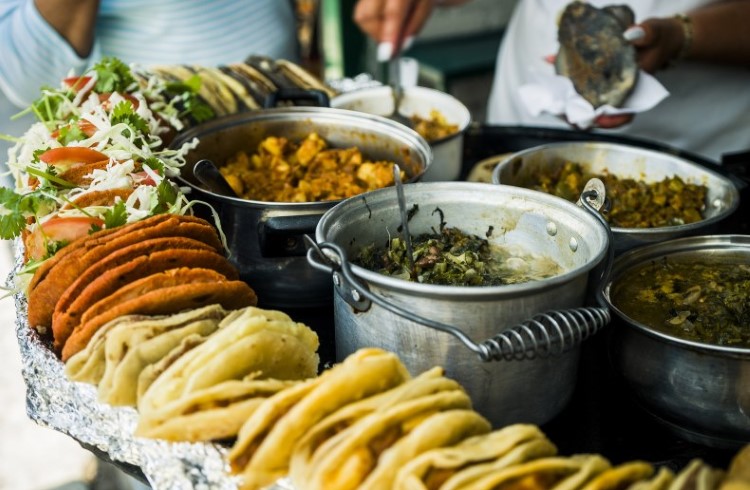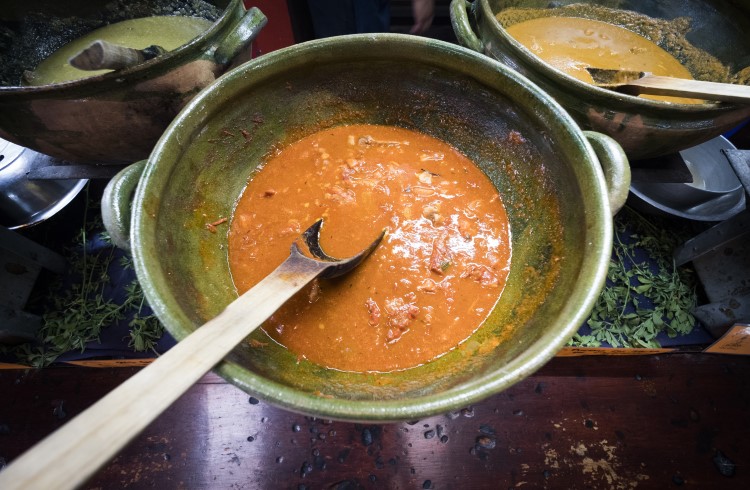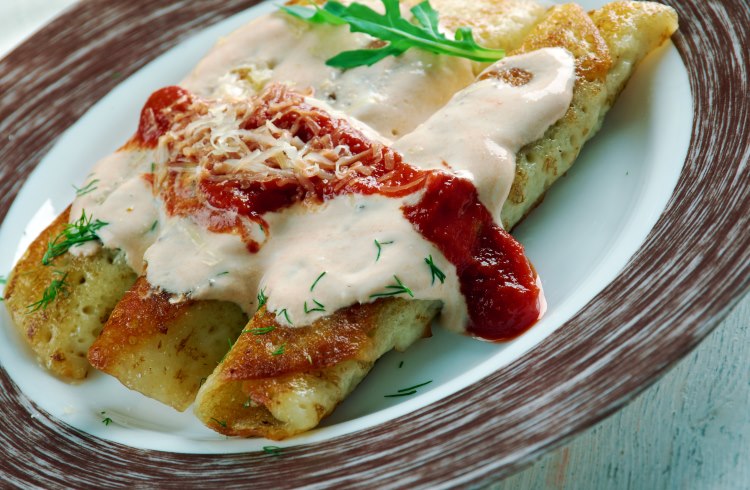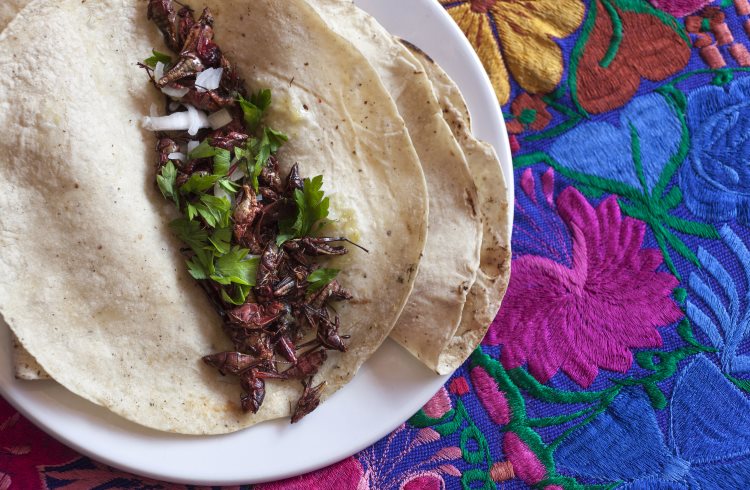In Search of the Best Traditional Mexican Food Around the Country
When it comes to food, Mexico is many cuisines, not just one. Each of its 31 states has its own characteristic tastes, ingredients, and traditions, although everyone agrees on the essential “T vitamins” – tortillas, tamales, and tacos.
 Photo © Getty Images / Matt Mawson
Photo © Getty Images / Matt Mawson
The chef and author Alejandro Ruiz is giving me a crash course in Oaxacan cuisine. We have an afternoon together, but I’d need months, possibly years, to grasp the complex cooking rituals of this southern Mexican state.
Take a simple yellow mole, the chili-based sauce found all over Oaxaca but rarely prepared the same way twice.
“On the Pacific Coast it’s made with iguana,” explains Ruiz. “But in Oaxaca City it’s beef or chicken. On the Isthmus [of Tehuantepec], you’d have it with sun-dried shrimps.” And of course, cooks in each region would use a different chili to flavor their sauce.
Mexican food is infinitely more complex than the familiar export version of beans and cheese. In Oaxaca alone there are eight regions differentiated by climate, customs, and ingredients. And Oaxaca is just one of the 31 United Mexican States, each with its own distinctive culture and food.
In fact, traditional Mexican cuisine is so exceptional in scope and heritage that, in 2010, UNESCO named it part of the “intangible cultural heritage of humanity” – alongside tango, Tibetan opera, and French gastronomy, the only other national cuisine honored.
The citation mentions Mexico’s unique crop-growing and cooking techniques, its utensils and, crucially, its amazing treasury of native ingredients. Corn, beans and chili all originated here. So did tomatoes, sweet potato, turkey, pumpkin (and its squashy cousins), avocados and – it’s thought – cacao, which the Mayans turned into chocolate to create one of humanity’s favorite foods.
But the strength of Mexican cuisine is in its mestizo or mixed roots; the combined bounty of pre-Hispanic Mexico with the foods of its Spanish invaders and, later, those of Lebanese, Korean, Chinese, Italian, and Caribbean immigrants. While researching a book on Mexican food, I criss-crossed the country, meeting professional and home cooks, learning regional food traditions, eating grasshoppers and ants and an entire taxonomy of chilis and tortillas. Here are some of the highlights.
- Dishes of the Yucatán
- Michoacán food
- Specialties of Oaxaca
- Listen to the World Nomads Podcast - Travel to Mexico During COVID-19

Dishes of the Yucatán
Preparing cochinita pibil is a messy business. In the little city of Izamalon the Yucatán Peninsula, Hermelinda de la Cruz is up to her elbows in corn dough (masa), stuffing it with shredded suckling pig meat and smothering the lot with earthy red achiote paste and a garlic- and tomato-spiked masa gravy. Then she trusses the hefty, six-pound tamale in banana leaves and lowers it into a hole in the earth lined with stones and embers. “It’s much better for the flavor in the ground,” de la Cruz assures me. “It’s more smoky, especially with the achiote.”
In the Mayan homeland of Yucatán, the custom of cooking pibil-style, in the ground, dates back thousands of years. It’s still a popular tradition at weddings and big celebrations such as Day of the Dead, though the tamales are made with chicken or pork these days instead of the hairless dog of much earlier times.
Other typical Mayan eats include chaya, the spinach-like leaf hailed as a superfood in the West but found here in humble preparations such as a cold “juice” and a hot soup sprinkled with Edam cheese, which Yucatecans adore. Salbutes are local tortillas stuffed with chicken, onion, and lettuce (add refried beans and you have panuchos). Sopa de lima is lime soup with chicken, coriander, and fried tortilla pieces, and it’s wonderfully refreshing in the stifling Caribbean heat.
Pumpkin seeds are another Mayan staple most commonly found in papadzules, tortillas dressed with spicy pumpkin seed sauce, boiled egg, and tomato. Yucatán is also known for its mestizo foods that meld not only Spanish influences – such as bistek yucateca, slow-cooked beef with achiote – but also Korean and Lebanese (thanks to laborers who came to work on the sisal plantations last century). You can thank the Lebanese for Mexico’s love of spit-roasted meats, especially the popular Yucatecan street food poc chuc, charcoal-grilled marinated pork.

Michoacán food
In the birthplace of the avocado, it’s generally agreed the good people of Michoacán state make the country’s best guacamole. And also its largest – a 3,788kg monster dip whipped up in Mexico’s avocado capital of Tancítaro in 2018. Michoacán’s other great gift to world cuisine is carnitas – the original pulled pork tortillas that are a staple of Mexican street food (antojitos). Carnitas buffs will happily explain the subtle differences between a costilla stuffed with rib meat, a buche (pork belly) and a maciza (white meat).
The Pacific state also gives its name to the popular chain of ice-cream parlors La Michoacána, known for their frozen paleta popsicles that come in exotic flavors such as guanabana (soursop) and – my favorite – the caramel custardy sapote. You’ll find their stores in every Mexican city.
Specialties of Oaxaca
“This is the dish that takes the most time,” Deyaniro Aquino says as she places a pot of estofado, a festive beef stew with plantain, apple, pineapple, various chilis, and cinnamon, on the table at La Teca restaurant. “Sometimes there can be a whole cow cooking for 24 hours. And there’s a lot of love that goes into making this stew too. You must be very patient and do it from the heart.”
At her tiny restaurant in Oaxaca City, Aquino recreates the food of her homeland in the Isthmus of Tehuantepec, the narrow waist of Mexico between the Pacific Ocean and Gulf of Mexico. Like all of Oaxaca – and Mexico – on her menu there are tamales, including a creamy, light one filled with tender corn, and various incarnations of tortillas including garnachas laden with beef, onion, and chipotle and totopos to go with the cumin-scented mole de camarron (shrimp).
Oaxacans place great stock in their food being criollo – homegrown, endemic – so dishes are rarely prepared the same way across its regions. But tortillas are typical everywhere and always handmade, such as the blue corn version topped with zucchini flowers and mozzarella-like queso oaxaqueño in Teotitlan del Valle.
Local markets offer the surest insights into regional tastes. At Oaxaca City’s 20 de Noviembre market you’ll find salt mined with agave worms and chili, piles of garlic- and chili-coated grasshoppers, and crisp tlayuda tortillas layered with beans, avocado, salsa, cheese and pork lard – so popular they’re known as Oaxacan pizzas. As Ruiz assures me, in Oaxaca, “it doesn’t matter if you go to a fine restaurant or a market, you are going to eat very well.”

Listen to the World Nomads Podcast - Travel to Mexico During COVID-19
Hear what it's like to visit Mexico now, plus learn more about traditional Mexican food, and go kayaking in Baja's Loreto Bay.
Related articles
Simple and flexible travel insurance
You can buy at home or while traveling, and claim online from anywhere in the world. With 150+ adventure activities covered and 24/7 emergency assistance.
Get a quote
1 Comment
There are Lebanese-Mexicans but Poc Chuc is Mayan, not Lebanese.